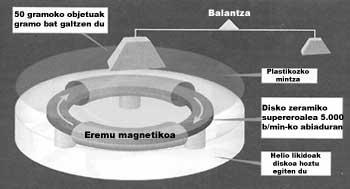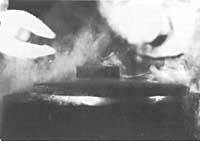Analyzing Antigravity
1997/01/01 Elhuyar Zientzia Iturria: Elhuyar aldizkaria

The theory of gravitation has been questioned by the antigravity field of a Russian physicist, so NASA also wants to experiment. In fact, on this occasion what has altered the world of scientists has been antigravity. In this sense it could be explained why unknown flying objects can arrive without noise and remain motionless at one point.
Russian physicist Eugene Podkletnov, who operates at the University of Tampere in Finland, has created an antigravity zone that affects several objects. The essay by this physicist has been revealed by the prestigious British journal Journal of Physics. However, the Sunday Telegraph magazine went ahead and published the debate.
The essay is simple in itself. Podkletnov rotates a superconducting ceramic disc at 5,000 revolutions per minute in an environment of -210°C. Then place the objects on top and measure the dough. According to the Russian scientist, when the disc rotates, the object loses about 1% of the mass and the phenomenon is the same if the object is metallic, wood or plastic. The faster the turning speed, the greater the mass loss. For Podkletnov, this phenomenon can only be explained by antigravity.

Gai honi buruzko eduki gehiago
Elhuyarrek garatutako teknologia





